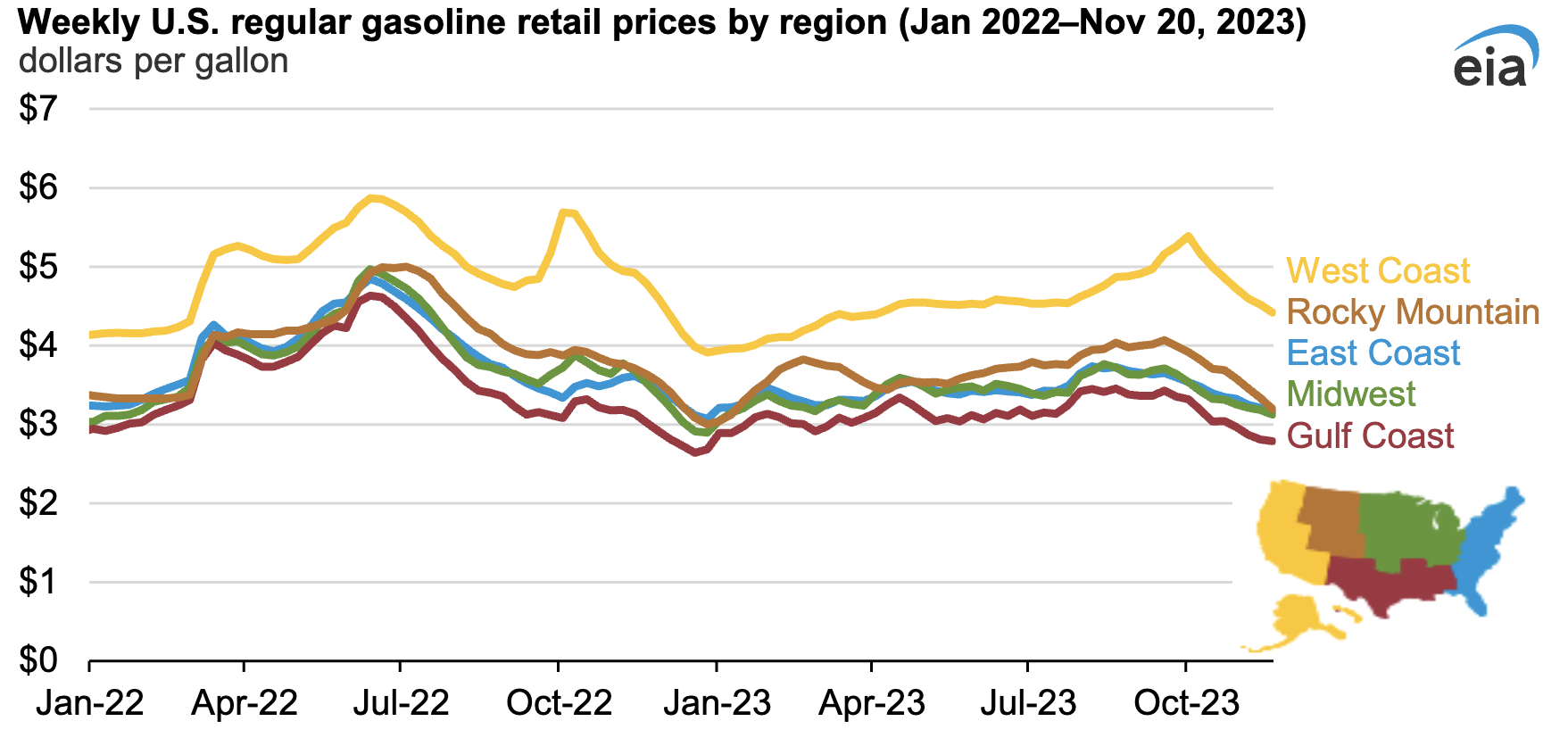The U.S. Energy Information Administration reports that gas prices in the U.S. are down 10% compared to the same time last year. Or, actually, taking inflation into account, they are down 13%! This is despite an expected 2% increase in miles traveled during Thanksgiving weekend.

California was a notable part of this change. “Less gasoline demand than usual this fall and an early transition to winter-blend gasoline in California helped accelerate the decline in prices. Regulations on gasoline vapor pressure allow refiners to switch to less expensive components to produce gasoline in the fall, which tends to reduce gasoline prices,” the Energy Information Administration (EIA) writes. Ignoring the part about winter blend, catch the note there that demand has been down in California.
Frankly, it seems to me that a part of the story has been ignored by the EIA. Maybe the impact is less than I’m expecting, but there’s no doubt there’s an impact. Naturally, I’m talking about the transition to electric vehicles. Seven years ago, you couldn’t be at an intersection in California — or at least Northern California — without seeing a few Teslas. These days, I’m sure it’s common to see a dozen or more Teslas and several other EVs at any intersection. Here in Southwest Florida, everywhere I go I see a bunch of Teslas and a handful of other EVs. California has long been the #1 driver of electric vehicle adoption in the U.S., and those EVs have to have eaten into gasoline demand quite a bit. Nationwide, EV adoption has to have eaten into gasoline demand a bit.

So, yes, gasoline demand is down for various reasons, but one of those reasons has to be growing EV driving.
“Regional gasoline prices are usually highest on the West Coast because of the region’s limited connections with other major refining centers, tight local supply and demand conditions, and gasoline specifications that make it more costly to manufacture. West Coast prices as of November 20 averaged $4.42/gal, down 8% since the same time last year,” the EIA notes. “The Rocky Mountain region faces similar logistical constraints as the West Coast, although overall the region has both less supply and demand. Rocky Mountain gasoline retail prices averaged $3.20/gal on November 20, down 12% from 2022.
“Gasoline prices are usually the lowest on the Gulf Coast, which holds about half of U.S. refining capacity and produces more gasoline than it consumes. On November 20, the average retail gasoline price on the Gulf Coast was $2.79/gal, down 8% from the same time last year.
“On the East Coast, which has the most gasoline demand of the five regions, retail gasoline prices averaged $3.17/gal, down 11% from 2022. In the Midwest, prices decreased 11% from this time last year to average $3.12/gal on the Monday before Thanksgiving.”
So, these regions are all seeing gas prices down between 8% and 12%, for an average across the country of -10%. No mention of growing EV adoption and EV driving, but come on — EVs are already at play here and having an effect, even if they aren’t the entire reason for lower gas prices.



